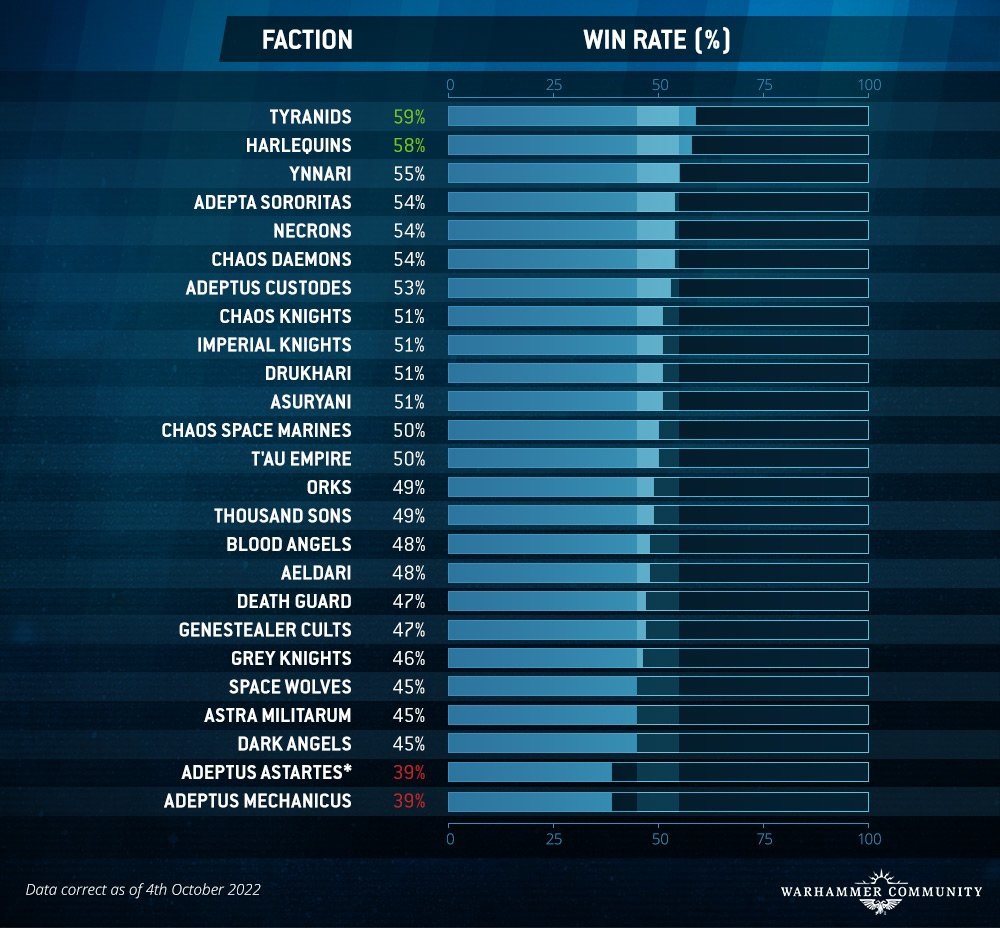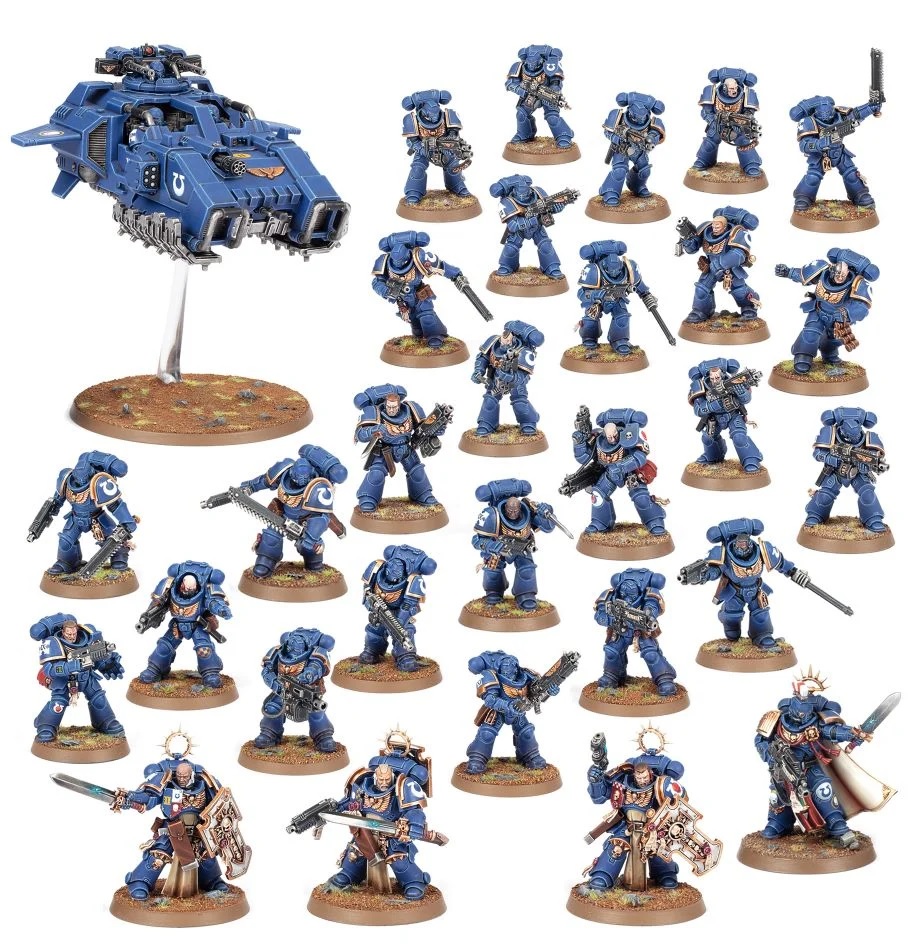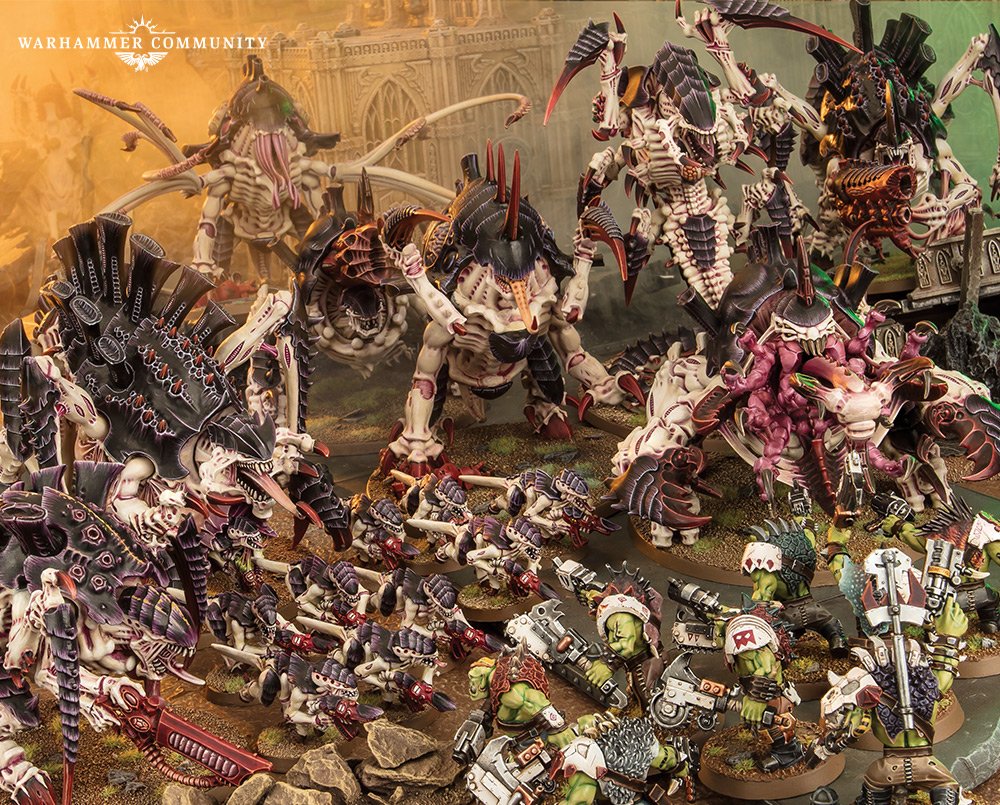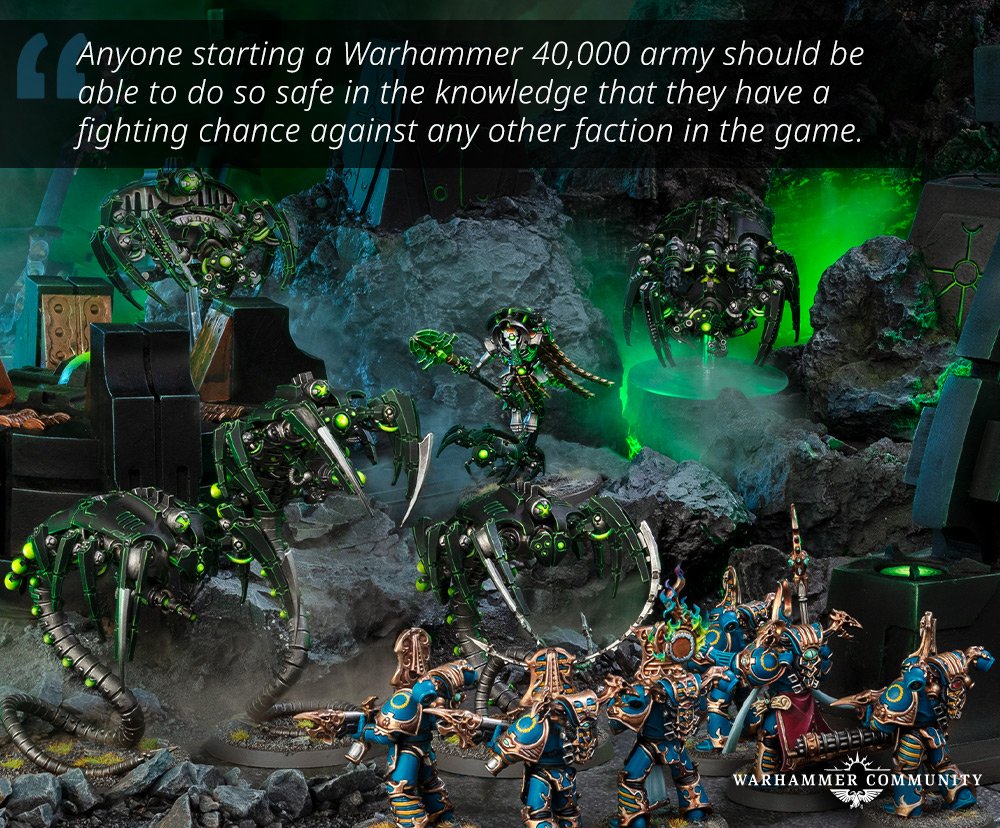Warhammer 40K: Metawatch – Win Rates and Balance Philosophy
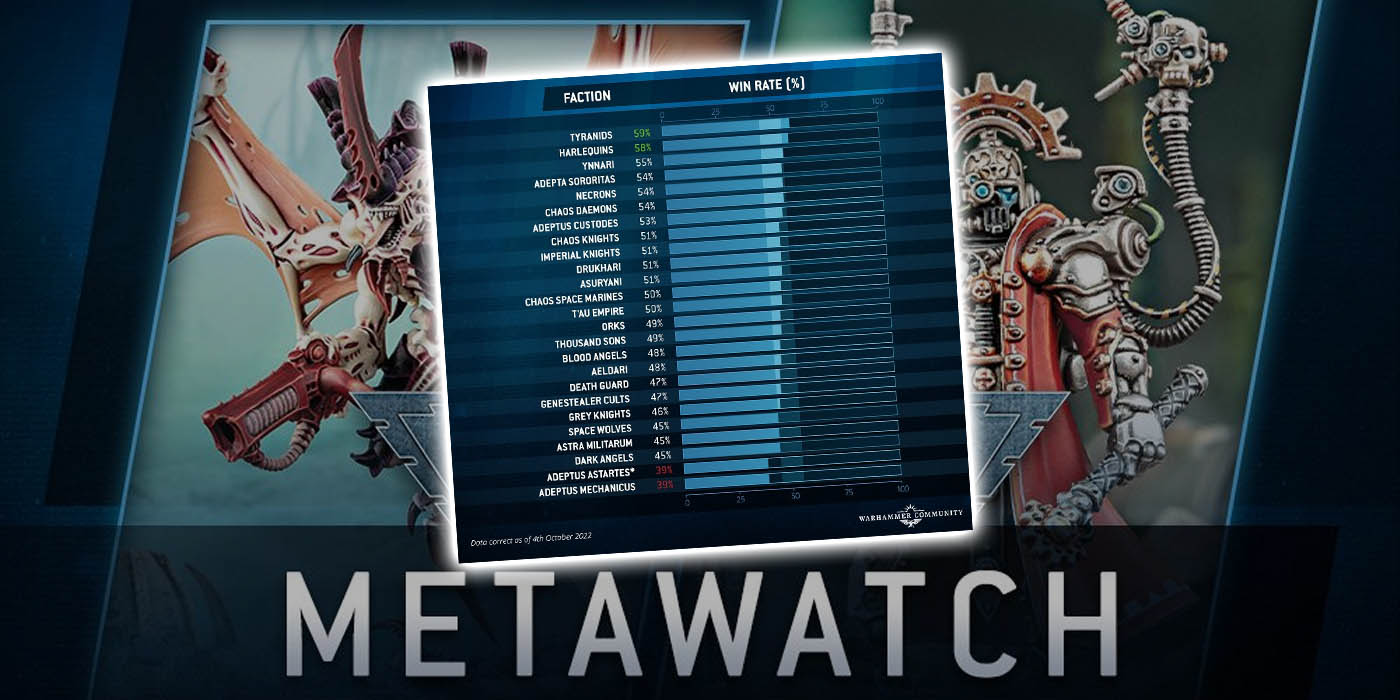
Games Workshop peels back the curtain to talk about Warhammer 40k’s balance philosophy and how they use win rate data.
Warhammer 40,000 is a complicated game and it’s even more complex to try to balance. There’s a lot of moving parts and variables to account for and to adjust. So when you’re trying to pin down something to measure every army against you’ve only got a handful of things that you can compare evenly. One such option is win rate data.
Today, Games Workshop covers the latest win rate data in the Metawatch and also dishes on the balance philosophy behind army updates and changes.
Win Rate Data
When assessing balance, we use an army’s Win Rate as the key metric – which, just like it sounds, is how many of their games they win. If an army has played 100 games and won 50, they’d have a 50% win rate. That would be great – optimal in fact. In an ideal world each army would have a win rate of exactly 50%, but ideal worlds don’t exist in the grim darkness of the far future (where they are mostly on fire or being invaded by monsters).
Therefore, we afford a margin of error of 5% either way in the data we collect, and aim for each army to show win rates between 45% and 55% – if it’s higher, it suggests the faction’s overperforming relative to its rivals, and if it’s lower it suggests they’re struggling to keep up.
It’s important to know that the win rate is the cornerstone for GW’s balancing attempts. They also account for a 5% margin of error. Ideally, they’d like every army to be right at 50% — but with that margin of error they are okay with armies being in the 45%-55% range. So how do all the armies stack up?
This data is based on over 100,000 games played using the War Zone Nephilim Mission pack between June and October 2022. As you can see from chart above, the majority of armies are within that “sweet spot” range of 45%-55%. There are a few outliers and GW address those in their article.
On The Low End
The two lowest performing armies are the Adeptus Astartes and the Adeptus Mechanicus and both have a win rate of just 39%. GW accounts for the Adeptus Astartes (lack of) win rate with a few good points:
- Space Marine armies are incredibly prevalent and are lots of players first army — this means most players know how to play them and how to play against them.
- More new players means a lower win rate due to learning how to play the game.
- Not all events break out the Adeptus Astartes out into their individual Chapters. This data includes a melting pot of Adeptus Astartes Armies.
- There are LOTS of Space Marine games. It’s harder for the top end win rates to pull up the lower end when there are 10000 games play with a faction vs a faction with only 100 wins.
This reasoning does make sense. But what about the Adeptus Mechanicus? There’s not much of a reason given by GW. So they are going to continue to monitor their results. Personally, I think a lot of it has to due with the learning curve of that particular army. I don’t know exactly how many games were played with it or if players are “sticking with it” long enough to really master it.
The Top End
On the top end of the spectrum we’ve got the Tyranids with a 59% win rate and the Harlequins following closely behind with a 58% win rate. GW doesn’t go into specifics in the article on these two armies in particular but if you’ve been playing with or against these armies you have a good idea of why they are winning at these rates.
Tyranids are in a very strong spot with their current codex. We won’t get into all the factors but they generally have the ability to play in all the phases, have good objective/secondary objective/board position management, can be super versatile/adaptable for the various missions, and have some great army synergy/rules to go along with it.
Harlequins are also an army that pops on the scene because of their high damage output, speed, and internal synergies. They aren’t quite as popular of an army but they also had a big bump in wins during the time period of this data collection. That may have skewed some of their numbers as a result.
Balance Philosophy
The last major topic we’re going to touch on is the Balance Philosophy of the Warhammer Studio. We’ve already covered the win rates which is a good unit of measure. There’s two quotes we’re going to look at to discuss.
“The Warhammer Studio takes matched play seriously. It’s not only the framework for thousands of games played at competitive events throughout the year, it also forms the common language of more casual games played on kitchen tables, at gaming clubs, and in stores around the world. A balanced game is good for everyone.”
I think this is a really good Philosophy to have about the game overall. Matched Play does dictate the framework of the overall game — even if you’re not a competitive player Matched Play still impacts your games. It’s that “common language” for all the other types of games that can be played. A balanced game is good for everyone.
The second quote is also a good look into GW’s Balance Philosophy:
“As such, there shouldn’t ever be one “best” army – each army should be the best at doing the thing it’s meant to be best at. That’s the ideal, both from a narrative and competitive perspective.”
Each army being the “best at doing what they are meant to be best at” is another good goal. But within that there’s only so many things in the game to be best at. So there’s bound to be some overlap. That said, it’s still an interesting insight into some of their end goals and game design/philosophy.
If you have some time watch the video as it’s a deeper dive into this discussion from Games Workshop.
What do you think of GW’s Balance Philosophy and using Win Rate data to help guide the game?

